AUCTORES
Globalize your Research
Research Article | DOI: https://doi.org/10.31579/2767-7370/026
1 Departement of Orthopedic Hag Elsafi Teaching Hospital-Khartoum, Sudan.
2 Departement of Pediatric Orthopedic Excellence Trauma Centre Khartoum, Sudan.
*Corresponding Author: Mohamed Hamid Awadelseid, Departement of Pediatric Orthopedic Excellence Trauma Centre Khartoum, Sudan.
Citation: Gaafar Siddig Awad Alseed, Mohamed Hamid Awadelseid. (2022). Outcome of Single-Stage Multiligamentous Reconstruction Surgery in Patients with Multiligament Knee Injury, J. New Medical Innovations and Research, 3(1): DOI: 10.31579/2767-7370/026
Copyright: © 2022 Mohamed Hamid Awadelseid. This is an open-access article distributed under the terms of The Creative Commons Attribution License, which permits unrestricted use, distribution, and reproduction in any medium, provided the original author and source are credited.
Received: 25 October 2021 | Accepted: 23 December 2021 | Published: 10 January 2022
Keywords: single-stage; multiligament; reconstruction; knee; injury
Background: Multiligament knee injury (MLKI) is a complex orthopedic injury leading to the tear of at least two of the major knee ligaments. However, there is no consensus on the optimal management of this debilitating condition. Regarding this, the present study was performed to evaluate the outcomes of single-stage multiligament reconstruction surgery in patients with MLKI.
Material &Methods: Cross-sectional hospital-based study done on Multicenter in a period of 7 months from March 2021. A total 20 male and female patients their age ranges from 20 years to 69 years the mean age 30 years having MLKI confirmed by clinical examination and MRI scan were included in this study. Patients' check list detailed demography including age, sex, causes of injury and duration of symptoms pre-operative were recorded after written consent from every patient. Lachman, anterior drawer, posterior drawer, dial test, valgus and varus stress tests were performed before surgery. All patients filled subjective Lysholm Knee form before surgery and at final follow up post-operative. The injured ligaments were reconstructed using auto-graft.
Results: There were 19 (95%) males and 1(5%) females. Right knee was injured in 14(70%) cases and left knee 6(30%) cases. At final follow-up, 70% patients achieved full ROM flexion, all of them have no giving way symptoms after 2 to 3monthes post-operative. There was significant improvement in Lysholm score. Out of 20 patients, 4 (20%) patients developed post-operative infection.
Conclusion: MLKI reconstruction yields a significant improvement from pre-operative to post-operative Lysholm scores. This suggests that surgical intervention provides benefit to patients in this population. Failure to treat all injured structures can lead to changes in knee kinematics and hence poor outcomes and an increased risk of graft failure.
Abbreviations Description
MLKI Multiligament knee injury
ACL Anterior cruciate ligament
PCL Posterior cruciate ligament
MCL Medial collateral ligament
LCL Lateral collateral ligament
PLC Posterolateral corner
PMC Posteromedial corner
RTP Return to play
PMB Posteromedial bundle
ALB Anterolateral bundle
AMB Anteromedial bundle
PLB Posterolateral bundle
KD Knee dislocation
ABPI Ankle brachial pressure index
MRI Magnetic resonance imaging
IKDC International knee documentation committee
BPTB Bone patella tendon bone
POL Posterior oblique ligament
DVT Deep vein thrombosis
RTA Road traffic accident
SMSB Sudan medical specialization board
VAS Visual analog scale
EDC Educational development center
OPL Oblique popliteal ligament
POL Posterior oblique ligament
LFC Lateral femoral condyle
MFC Medial femoral condyle
Multiligament knee injury (MLKI) is a complex orthopedic injury that usually occurs as a result of traumatic knee injury. The MLKI is referred to the tear of at least two major knee ligaments, including anterior cruciate ligament (ACL), posterior cruciate ligament (PCL), posteromedial ligamentous complex(corner) including the medial collateral ligament (MCL), posterior oblique ligament, posteromedial capsule and posterolateral ligamentous complex(corner) (PLC) including the lateral collateral ligament, popliteofibular ligament, popliteus tendon, and posterolateral capsule.
The multiligament knee injury can be further complicated by the concurrence of fracture and vascular or nerve damage [1, 2]. Vascular injury occurs in 30-35% of the cases in forms of arterial rupture or thrombosis, which may lead to the limb amputation in case of inadequate management [3]. Therefore, the vascular injury should be inspected in all cases. The neural damage, especially peroneal nerve injury, is also a potential consequence of knee dislocation. Neurovascular injuries are commonly seen in PLC injuries [4, 5].
The multiligament knee injury is associated with considerable morbidity affecting the life of the patient by incapacitating in his daily life activities and affecting directly his quality of life, In this regard, the affected patients may experience pain and instability even several years after the initial injury. Given the serious consequences of a neglected injury, a high index of suspicion should be devoted to MLKI diagnosis [6].
Although a clinical examination is the cornerstone of determining the extent of the injury and formulating the treatment plan, it is not always reliable. Stress radiographs could be used to aid in the diagnosis of ligament injuries [7].Moreover, multiligament knee injury therapeutic options vary from conservative management to acute or chronic repair/ reconstruction of the injured structures. Nonetheless, there is a paucity of high-level evidence on the optimal surgical management of this uncommon but debilitating condition. Despite the lack of a clear consensus regarding the superiority of either single-staged or staged surgery of multiligament knee injury, some surgeons opt for the staged procedure in cases with concomitant injuries, such as fractures, vascular injuries, and life-threatening head, thoracic, or abdominal injuries [8].
Problem statement
Patients with multiple ligaments injuries of the knee become disabled for a long period. This disability arises from the pain, stiffness and instability which eventually leading to development of early osteoarthritis. A disability that might be associated with increased frequencies of sick leave from work, or much more dire consequences, such as quitting a job or being relieved of duty.
Justification
Multi-ligament knee injuries are relatively rare, not much data has been done on it. This study would help surgeons to guide them better result following reconstruction of injured knee ligaments. It will also help patients with the knowledge of how to deal with a multi-ligament knee injury (in the short term). Due to lack data about same study in Sudan, we want to contribute to increasing the knowledge and lighting that type of injures which mainly affect young peoples
General Objectives: Short-term Outcome of late Multi-ligament Knee Injury Reconstruction
Specific Objectives:
Cross-sectional hospital-based study were conducted in multiple centers. All these centers had operating rooms, well equipped with arthroscopy tower and its accessories. in the period from March 2021 to October 2021, Patients, who diagnosed with multi-ligament knee injury, confirmed by MRI and diagnostic arthroscopy, underwent arthroscopic reconstruction and follow the same post-operative rehabilitation program within the study period.
Inclusion Criteria
All patients with multiligament knee injury (at least 2major ligaments)
Delayed presentation more than 6wks
Patient compliance with postoperative physiotherapy protocols
Exclusion Criteria
Presence of malalignment
Patients with around knee fracture
Presence of severe osteoarthritis
Patients with partial ligament tear
Total patient’s coverage is selected as a sampling technique, due to the rareness of this type of injury and its management during the period of the study. Therefore, a total of 20 patients have proved to satisfy the inclusion criteria. All of them underwent ligament reconstruction by our senior surgeon, with pre- and post-operative hospital care and same post hospital follow up. Data Collection Tools and Techniques was collected using a quantitative method by a pre-structured checklist questionnaire including: Demographic information: age and sex.
Lysholm knee score system, which is a score to measure the knee function in a scale of maximum value of 100 point, summed up from 8 partial questions about the knee functions pre- and post-operative, from 3 to 12 months duration.
VAS score for pain which is score measure the degree of pain in digital standard starting from 1 to 10, used pre- and post-operative.
Duration symptom before operation and the cause of MLKI.Post-operative data: complication, returning back activity, flexion range, using support or brace, satisfaction.
This study covered 20 patients all of them have same pre- and post-operative process all of them full filled both check list questionnaire and Lysholm score about their problems by directs contact with patients, the results of their data which collected in 2021 and is used The SPSS 23 software in presenting, describing and analyzing the data. 20 patients, the majority of them, 19 (95%) are males, while only 1 (5%) is female.
The age results show a range of maximum 69 years and the minimum20 years, mean age 30.6 years, standard deviation 9.7 years, as shown in Table (1) which shows majority of patients (10), their age were between 20-29yrs, followed by 9 patients ranging between (30-39yrs) and only one patient was above 40yrs old.
Injury pattern | N | % |
ACL + LCL | 10 | 50 |
ACL + PCL + MCL | 4 | 20 |
ACL + MCL | 2 | 10 |
ACL + PCL + PLC | 2 | 10 |
ACL + PLC | 1 | 5 |
ACL + PCL + LCL | 1 | 5 |
Table 1. Reflecting Patient injury pattern
The most frequent combination of ligament injury was the combined lesion of the ACL + LCL rupture found in 10 patients (50%), followed by the ACL + PCL + MCL in 4 patients (20%), the ACL + MCL in 2 patients (10%), the ACL + PCL + PLC in 2 patients (10%) and those of the ACL + PLC, ACL + PCL + LCL, each with one patient, and individual ligament involved in which ACL has highest percentage 100%, followed by LCL 55%, PCL 35%, MCL 30%, and PLC 15%.
Regarding the side of the injury, the majority of cases were right sided injury 14 patients (70%), followed by 6 patients with left sided injury (30%) as shown in figure (1).
Presenting Symptoms: Giving way is major presenting symptoms 20 (100%), pain is second presenting symptoms usually associated with exertion 15 (75%), locking is third symptoms 11 (55%) of total number of patients.
Pain data was collected by the VAS scale from 0 (No pain al all) to 10 (Severe Pain), and the analysis below showed pre-operative severity of the pain, 50% score for severe pain, 30% show moderate pain, 20% show mild pain.
Then we analyzed all that symptoms post operatively to observed their response to the operation, we found most of them 19 (95%) patients they have total disappearance of giving way unless 1 (5%) patients still has giving way, we found all of the patients have no locking symptoms post-operative 20 (100%), and we compared between pre and post-operative values.
Pain scores were measured by the VAS scale of pain from 0 to 10 post-operative we found 45% they have no pain , 40 % they have mild pain with exertion( 1-3 socore), 10% have moderate pain with exertion( 4,5,6 score), 5% have severe pain with exertion ( 7,8,9 scores).
A comparison is done between the results of the pain scores pre- and post-operative, with a one missing value. Pre-operative mean was 3.3 of the scale, while the post-operative mean value was 1.2.
The scores of the VAS pain scale pre- and post-operative were analyzed statistically to evaluate the statistical significance of the effect of operation, i.e., to judge whether this variation in the pre- and post-scores is significant or due to chance, using the WILCOXON Singed Ranks test, which is a Non-Parametric test used to examine paired or related sets of data. The Wilcoxon test variables are listed, and resulting a p-value of < 0>
Duration of the symptoms till the operation is ranging from less than one year to maximum of 9years, mean value 5 years and the standard deviation 3.94.
Contact sport injury was the most common mechanism of injury accounting (75%), followed by road traffic accident about (25%).
Post-operative Data:
Regarding postoperative complications, it’s found to be: postoperative infection 4 patients (20%), stiffness in 2 patients (10%) and there were no DVT or re-rupture of the graft.
Regarding time to return back to the normal life activity, it ranges from 2-8 months with mean of 3.45 months, and the standard deviation 1.6.
At final follow up, active range of motion were assessed as follows: 14 patients (70%) has full flexion of 120 degrees, 4 patients (20%) has 90 degree flexion and only two patients (10%) has ROM less than 90 degrees as shown in figure 2.
Self-satisfaction of the patients after the operation measured 46 (95%) fully satisfied, and only one (5%) with partially satisfaction, as in Figure 3.
Subjective outcome:
Lysholm Scoring System to evaluate the function of the knee by points maximum (100).The total score attained is classified to 4sections, which are Excellent (100 to 95), Good (94 to 84), Fair (83 to 65), and Poor (less than 65). The scoring points of the patients pre-operative and post-operative were found. The lysholm score mean value pre-operatively was (58.5), with a standard deviation of 8.2. Post-operative Lysholm score mean value of 93.6 and standard deviation of 3.2. Figure 4.
Show these values with a few other statistics. Significant difference between pre and post lysholm scores.
Regarding the effect of postoperative infection on lysholm scores was analyzed, we found, those patients who developed postoperative infection has lower score than others in the study.
In table 2, we analyzed the impact of high preoperative lysholm score on postoperative scores, we found, high postoperative lysholm scores has relation with preoperative scores.
Lysholm score preoperatively | Preop lysholm mean | Preop lysholm standard deviation | Postop lysholm mean | Postop lysholm standard deviation |
Lysholm score <40> | 38 | 1.0 | 89 | 6.0 |
Lysholm score 40-60 | 57.3 | 2.3 | 93.5 | 2.42 |
Lysholm score 60-80 | 65.3 | 2.9 | 94.9 | 0.78 |
Table 2: Shows improvement of lysholm scores postoperatively.
The current study involved the investigation of the outcome of single-staged surgical reconstruction in the patients with MLKI.
The study aims generally to assess the clinical outcome of all patients underwent MLKI reconstruction, specifically to assess the outcome determined by the function of the knee post-operative using Lysholm Knee scoring scale and the ROM flexion level of the knee, and also to compare stability pre-& post-operative.
Most of our subjects were males, roughly 95%. Again, this is because of the nature of injury; women are not fully allowed to participate in sport practice due to cultural issues, this reflects the the lower percentage of female who participated in our study. All our female subjects had their ligaments torn from road traffic accidents.
With regard to sex, the prevalence was higher in men, which is similar to that reported in the literature. Gender effect on the functional outcome of multi-ligament knee injury is not yet clear; due to having a very small female subject (5%) it is rather compelling to find out whether females have a better outcome than males, or not [9].
In our findings we noticed that most of our patients were between the second or the third decade of life; this is mainly due to the nature of the injury.
The most frequent injured ligament was ACL in all patients (100%), and most combined ligament was LCL in (50%) of patients.The group of ACL injury and other combined ligament injuries was more affected during sports practice. The groups involving PCL injuries with other associated ligament disruptions were related to traffic accidents. In the literature; Helgeson et al, concluded the same result in their study [10].
Most of our participants sustained their MLKI while practicing sport followed those injured by accident, and in Sudan younger men tend to play football (soccer). However, it may be due to lack of proper warm up exercises.
In the literature;the injuries caused by sports practice exceeded those caused by traffic accidents, which corroborates some articles. On the other hand, some authors quote traffic accidents in their articles as being the most frequent cause, followed by sports accidents. In our “sports injuries” case series soccer practice generated most occurrences of multiple ligament disruptions in the knee [11].
In this study, we found the main presenting symptoms is giving way (100%) followed by pain (75%): this agree with Mayo Clinic Jeff Houck et al their conclusions that the main presenting symptoms of patients with MLKI are instability and pain [12].
In this study, it was ranging from less than 1 year to 9 years with mean value of 5 years and standard deviation of 3.94. This is against literature, most authors performed at least 3 weeks after injury to avoid arthrofibrosis as; Shelbourne et al, their conclusion that there are significant potential complications associated with both early and delayed surgical reconstruction of the MLKI, which can negatively affected clinical outcomes, this is not defect in our data collection or our study , but that means too late presentation to arthroscopic clinic this point need more work by teaching the athletes and nonathletic the important of this issue [13].
Postoperative infection rate was high in this study (20%), and may be attributed factors related to sterilization methods, postoperative surgical wound care and hygiene. These patients underwent early debridement with resolution of infection with no need for graft removal.
In the literature; Postoperative infections have been reported to occur in 0% to 17.4% of surgical procedures to treat knees with multiligament injuries. Risk factors include increased surgical time, prolonged tourniquet use, introduction of foreign material, hematoma formation, and medical comorbidity [14].
Regarding knee stiffness post-opeatively, it was found to be (10%) in our study which is not low and may be, the lack of compliance of patients for rehabilitation protocols to be the major cause.
In the literature; arthrofibrosis is common, requires surgical treatment in 29% of patients, and is more common after more severe injuries, medial-sided repair or reconstruction, and acute surgery. Cook et al. noted that injuries that included more than two ligaments and acute surgery increased the risk of stiffness requiring a manipulation under anesthesia. Delayed reconstruction has been advocated to decrease the risk of this occurrence [15].
The knee is maintained in ROM brace in 30 degree flexion with partial weight bearing for 4-6weeks.Postoperative rehabilitation started immediately in day one of surgery aiming for quadriceps strengthening exercises, gradual increase of flexion range and preventing the lack of full extension.
In the literature; regardless of the surgical technique, postoperative rehabilitation plays an important role in the final outcome in knees with multiligament injuries.
A balance must be found between immobilizing the knee to allow healing of the soft tissue and early motion to avoid arthrofibrosis. In general, patients are fitted with a hinged knee brace to be worn for the first six weeks at all times. For the first two to six weeks postoperatively, patients are kept either non-weight-bearing or toe touch weight-bearing. For some therapy protocols, therapy begins on postoperative day one with prone active and passive range of motion. If the PCL was reconstructed, then active quadriceps exercises are avoided for six weeks. Other protocols, such as the one established by Fanelli and Edson, recommend immobilization in extension for three weeks. For athletes, straight-ahead running is gradually allowed, followed by cutting and then sports-specific therapy, and full release to sport participation around nine months [16].
As far as patient satisfaction is concerned, in my research, Self-satisfaction of the patients after the operation measured 19 (95%) fully satisfied, and only one (5%) with partially satisfaction.
In the literature, by Mook et al., the percentage of patients who had excellent or good subjective outcomes in the single late stage treatment group was significantly greater than that in the acute treatment group [17].
The descriptive of pain post-operatively show that 45% have no pain, 40% have mild pain with exertion, only 10% have moderate pain with exertion, and 5% also have severe pain with exertion. That suggests there is an obvious relieving of pain post-operative as compared with pre-operative results, which showed almost 50% presented with severe pain and 30% presented with moderate pain and 20% showed mild pain. The Wilcoxon’s Signed Rank Test has proved a very high significant result difference in the pain scores pro- and post-operative, (p-value < 0>
The Lysholm scores for both pre- and post-operation were tested for Normality, the Wilcoxon’s Signed Rank Test (Non-Parametric test) was applied to examine the significance pre- and post-operation scores of the Lysholm, where the result proved a very high significant difference between the pre- and post-scores, with p-value< 0>
Based upon the weighted mean improvement of Lysholm scoring from 58.5 to 93.65 it appears that patients are able to obtain near normal restoration of functional outcomes.
Interestingly it’s paramount to highlight that the presence of low lysholm scores preoperatively, this will continue postoperatively despite improvement of the score dramatically following surgery, and likewise; the postoperative infection has direct impact on the lysholm scores postoperatively.
In the literature; Briggs et al. systematically reviewed acceptable functional outcome following the surgical management of MLKI, they concluded that an improvement in Lysholm outcome scoring in operative group when compared to non-operative group. Surgical intervention to regain knee stability has potential risks. However, it demonstrates that functional outcomes measured by Lysholm scoring improve following surgery [18].
Multiligament knee injuries are complex and a high level of suspicion is required when treating these patients review of the current literature concludes that surgical ligamentous repair and/or reconstruction of the MLKI yields a significant improvement from pre-operative to post-operative Lysholm scores. This suggests that surgical intervention provides benefit to patients in this population. Failure to treat all injured structures can lead to changes in knee kinematics and hence poorer outcomes and an increased risk of graft failure.According to all found results,which has proved an obvious improving of the patients post-operatively.
The researcher believes that this type of remedy of MLKI, which is arthroscopic technique, gives much more flexibility intraoperative for placing the graft anatomic position, which results in a greater effect on functional outcome, and gives a very good improvement in ROM and flexion, as the results of the analyses found in the study, in both the pain relief levels and the Lysholm score.
Recommendations
Clearly Auctoresonline and particularly Psychology and Mental Health Care Journal is dedicated to improving health care services for individuals and populations. The editorial boards' ability to efficiently recognize and share the global importance of health literacy with a variety of stakeholders. Auctoresonline publishing platform can be used to facilitate of optimal client-based services and should be added to health care professionals' repertoire of evidence-based health care resources.

Journal of Clinical Cardiology and Cardiovascular Intervention The submission and review process was adequate. However I think that the publication total value should have been enlightened in early fases. Thank you for all.

Journal of Women Health Care and Issues By the present mail, I want to say thank to you and tour colleagues for facilitating my published article. Specially thank you for the peer review process, support from the editorial office. I appreciate positively the quality of your journal.
Journal of Clinical Research and Reports I would be very delighted to submit my testimonial regarding the reviewer board and the editorial office. The reviewer board were accurate and helpful regarding any modifications for my manuscript. And the editorial office were very helpful and supportive in contacting and monitoring with any update and offering help. It was my pleasure to contribute with your promising Journal and I am looking forward for more collaboration.

We would like to thank the Journal of Thoracic Disease and Cardiothoracic Surgery because of the services they provided us for our articles. The peer-review process was done in a very excellent time manner, and the opinions of the reviewers helped us to improve our manuscript further. The editorial office had an outstanding correspondence with us and guided us in many ways. During a hard time of the pandemic that is affecting every one of us tremendously, the editorial office helped us make everything easier for publishing scientific work. Hope for a more scientific relationship with your Journal.
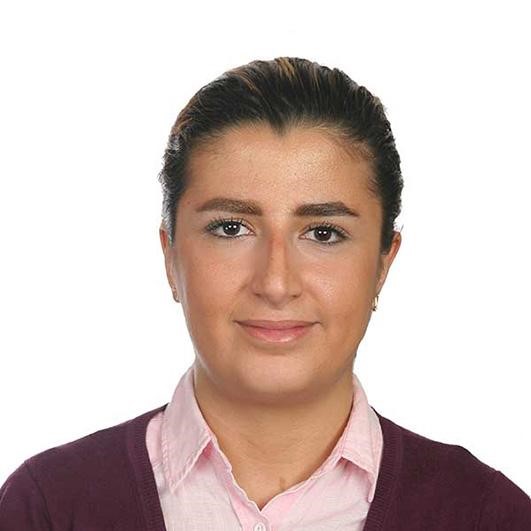
The peer-review process which consisted high quality queries on the paper. I did answer six reviewers’ questions and comments before the paper was accepted. The support from the editorial office is excellent.

Journal of Neuroscience and Neurological Surgery. I had the experience of publishing a research article recently. The whole process was simple from submission to publication. The reviewers made specific and valuable recommendations and corrections that improved the quality of my publication. I strongly recommend this Journal.

Dr. Katarzyna Byczkowska My testimonial covering: "The peer review process is quick and effective. The support from the editorial office is very professional and friendly. Quality of the Clinical Cardiology and Cardiovascular Interventions is scientific and publishes ground-breaking research on cardiology that is useful for other professionals in the field.

Thank you most sincerely, with regard to the support you have given in relation to the reviewing process and the processing of my article entitled "Large Cell Neuroendocrine Carcinoma of The Prostate Gland: A Review and Update" for publication in your esteemed Journal, Journal of Cancer Research and Cellular Therapeutics". The editorial team has been very supportive.

Testimony of Journal of Clinical Otorhinolaryngology: work with your Reviews has been a educational and constructive experience. The editorial office were very helpful and supportive. It was a pleasure to contribute to your Journal.

Dr. Bernard Terkimbi Utoo, I am happy to publish my scientific work in Journal of Women Health Care and Issues (JWHCI). The manuscript submission was seamless and peer review process was top notch. I was amazed that 4 reviewers worked on the manuscript which made it a highly technical, standard and excellent quality paper. I appreciate the format and consideration for the APC as well as the speed of publication. It is my pleasure to continue with this scientific relationship with the esteem JWHCI.

This is an acknowledgment for peer reviewers, editorial board of Journal of Clinical Research and Reports. They show a lot of consideration for us as publishers for our research article “Evaluation of the different factors associated with side effects of COVID-19 vaccination on medical students, Mutah university, Al-Karak, Jordan”, in a very professional and easy way. This journal is one of outstanding medical journal.
Dear Hao Jiang, to Journal of Nutrition and Food Processing We greatly appreciate the efficient, professional and rapid processing of our paper by your team. If there is anything else we should do, please do not hesitate to let us know. On behalf of my co-authors, we would like to express our great appreciation to editor and reviewers.

As an author who has recently published in the journal "Brain and Neurological Disorders". I am delighted to provide a testimonial on the peer review process, editorial office support, and the overall quality of the journal. The peer review process at Brain and Neurological Disorders is rigorous and meticulous, ensuring that only high-quality, evidence-based research is published. The reviewers are experts in their fields, and their comments and suggestions were constructive and helped improve the quality of my manuscript. The review process was timely and efficient, with clear communication from the editorial office at each stage. The support from the editorial office was exceptional throughout the entire process. The editorial staff was responsive, professional, and always willing to help. They provided valuable guidance on formatting, structure, and ethical considerations, making the submission process seamless. Moreover, they kept me informed about the status of my manuscript and provided timely updates, which made the process less stressful. The journal Brain and Neurological Disorders is of the highest quality, with a strong focus on publishing cutting-edge research in the field of neurology. The articles published in this journal are well-researched, rigorously peer-reviewed, and written by experts in the field. The journal maintains high standards, ensuring that readers are provided with the most up-to-date and reliable information on brain and neurological disorders. In conclusion, I had a wonderful experience publishing in Brain and Neurological Disorders. The peer review process was thorough, the editorial office provided exceptional support, and the journal's quality is second to none. I would highly recommend this journal to any researcher working in the field of neurology and brain disorders.

Dear Agrippa Hilda, Journal of Neuroscience and Neurological Surgery, Editorial Coordinator, I trust this message finds you well. I want to extend my appreciation for considering my article for publication in your esteemed journal. I am pleased to provide a testimonial regarding the peer review process and the support received from your editorial office. The peer review process for my paper was carried out in a highly professional and thorough manner. The feedback and comments provided by the authors were constructive and very useful in improving the quality of the manuscript. This rigorous assessment process undoubtedly contributes to the high standards maintained by your journal.
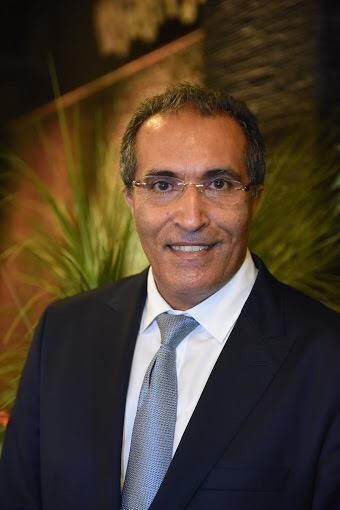
International Journal of Clinical Case Reports and Reviews. I strongly recommend to consider submitting your work to this high-quality journal. The support and availability of the Editorial staff is outstanding and the review process was both efficient and rigorous.
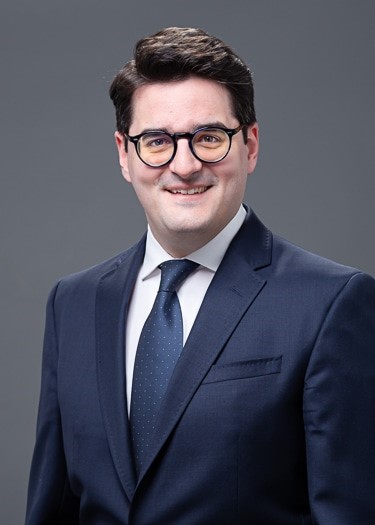
Thank you very much for publishing my Research Article titled “Comparing Treatment Outcome Of Allergic Rhinitis Patients After Using Fluticasone Nasal Spray And Nasal Douching" in the Journal of Clinical Otorhinolaryngology. As Medical Professionals we are immensely benefited from study of various informative Articles and Papers published in this high quality Journal. I look forward to enriching my knowledge by regular study of the Journal and contribute my future work in the field of ENT through the Journal for use by the medical fraternity. The support from the Editorial office was excellent and very prompt. I also welcome the comments received from the readers of my Research Article.

Dear Erica Kelsey, Editorial Coordinator of Cancer Research and Cellular Therapeutics Our team is very satisfied with the processing of our paper by your journal. That was fast, efficient, rigorous, but without unnecessary complications. We appreciated the very short time between the submission of the paper and its publication on line on your site.

I am very glad to say that the peer review process is very successful and fast and support from the Editorial Office. Therefore, I would like to continue our scientific relationship for a long time. And I especially thank you for your kindly attention towards my article. Have a good day!

"We recently published an article entitled “Influence of beta-Cyclodextrins upon the Degradation of Carbofuran Derivatives under Alkaline Conditions" in the Journal of “Pesticides and Biofertilizers” to show that the cyclodextrins protect the carbamates increasing their half-life time in the presence of basic conditions This will be very helpful to understand carbofuran behaviour in the analytical, agro-environmental and food areas. We greatly appreciated the interaction with the editor and the editorial team; we were particularly well accompanied during the course of the revision process, since all various steps towards publication were short and without delay".

I would like to express my gratitude towards you process of article review and submission. I found this to be very fair and expedient. Your follow up has been excellent. I have many publications in national and international journal and your process has been one of the best so far. Keep up the great work.

We are grateful for this opportunity to provide a glowing recommendation to the Journal of Psychiatry and Psychotherapy. We found that the editorial team were very supportive, helpful, kept us abreast of timelines and over all very professional in nature. The peer review process was rigorous, efficient and constructive that really enhanced our article submission. The experience with this journal remains one of our best ever and we look forward to providing future submissions in the near future.

I am very pleased to serve as EBM of the journal, I hope many years of my experience in stem cells can help the journal from one way or another. As we know, stem cells hold great potential for regenerative medicine, which are mostly used to promote the repair response of diseased, dysfunctional or injured tissue using stem cells or their derivatives. I think Stem Cell Research and Therapeutics International is a great platform to publish and share the understanding towards the biology and translational or clinical application of stem cells.

I would like to give my testimony in the support I have got by the peer review process and to support the editorial office where they were of asset to support young author like me to be encouraged to publish their work in your respected journal and globalize and share knowledge across the globe. I really give my great gratitude to your journal and the peer review including the editorial office.

I am delighted to publish our manuscript entitled "A Perspective on Cocaine Induced Stroke - Its Mechanisms and Management" in the Journal of Neuroscience and Neurological Surgery. The peer review process, support from the editorial office, and quality of the journal are excellent. The manuscripts published are of high quality and of excellent scientific value. I recommend this journal very much to colleagues.
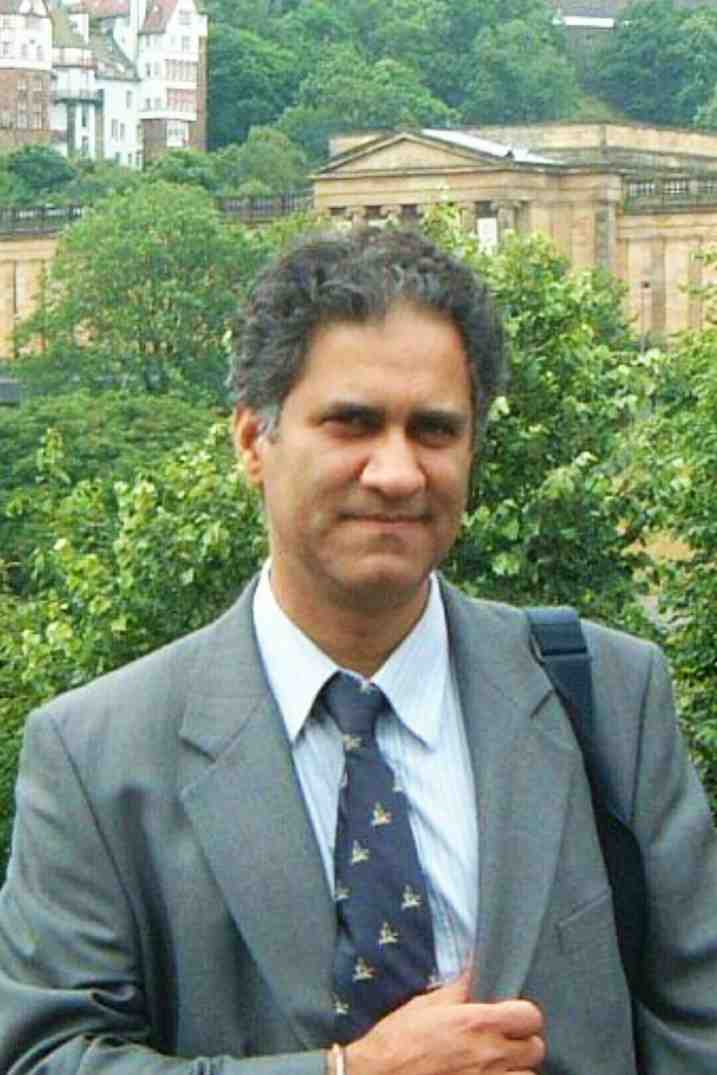
Dr.Tania Muñoz, My experience as researcher and author of a review article in The Journal Clinical Cardiology and Interventions has been very enriching and stimulating. The editorial team is excellent, performs its work with absolute responsibility and delivery. They are proactive, dynamic and receptive to all proposals. Supporting at all times the vast universe of authors who choose them as an option for publication. The team of review specialists, members of the editorial board, are brilliant professionals, with remarkable performance in medical research and scientific methodology. Together they form a frontline team that consolidates the JCCI as a magnificent option for the publication and review of high-level medical articles and broad collective interest. I am honored to be able to share my review article and open to receive all your comments.

“The peer review process of JPMHC is quick and effective. Authors are benefited by good and professional reviewers with huge experience in the field of psychology and mental health. The support from the editorial office is very professional. People to contact to are friendly and happy to help and assist any query authors might have. Quality of the Journal is scientific and publishes ground-breaking research on mental health that is useful for other professionals in the field”.

Dear editorial department: On behalf of our team, I hereby certify the reliability and superiority of the International Journal of Clinical Case Reports and Reviews in the peer review process, editorial support, and journal quality. Firstly, the peer review process of the International Journal of Clinical Case Reports and Reviews is rigorous, fair, transparent, fast, and of high quality. The editorial department invites experts from relevant fields as anonymous reviewers to review all submitted manuscripts. These experts have rich academic backgrounds and experience, and can accurately evaluate the academic quality, originality, and suitability of manuscripts. The editorial department is committed to ensuring the rigor of the peer review process, while also making every effort to ensure a fast review cycle to meet the needs of authors and the academic community. Secondly, the editorial team of the International Journal of Clinical Case Reports and Reviews is composed of a group of senior scholars and professionals with rich experience and professional knowledge in related fields. The editorial department is committed to assisting authors in improving their manuscripts, ensuring their academic accuracy, clarity, and completeness. Editors actively collaborate with authors, providing useful suggestions and feedback to promote the improvement and development of the manuscript. We believe that the support of the editorial department is one of the key factors in ensuring the quality of the journal. Finally, the International Journal of Clinical Case Reports and Reviews is renowned for its high- quality articles and strict academic standards. The editorial department is committed to publishing innovative and academically valuable research results to promote the development and progress of related fields. The International Journal of Clinical Case Reports and Reviews is reasonably priced and ensures excellent service and quality ratio, allowing authors to obtain high-level academic publishing opportunities in an affordable manner. I hereby solemnly declare that the International Journal of Clinical Case Reports and Reviews has a high level of credibility and superiority in terms of peer review process, editorial support, reasonable fees, and journal quality. Sincerely, Rui Tao.

Clinical Cardiology and Cardiovascular Interventions I testity the covering of the peer review process, support from the editorial office, and quality of the journal.
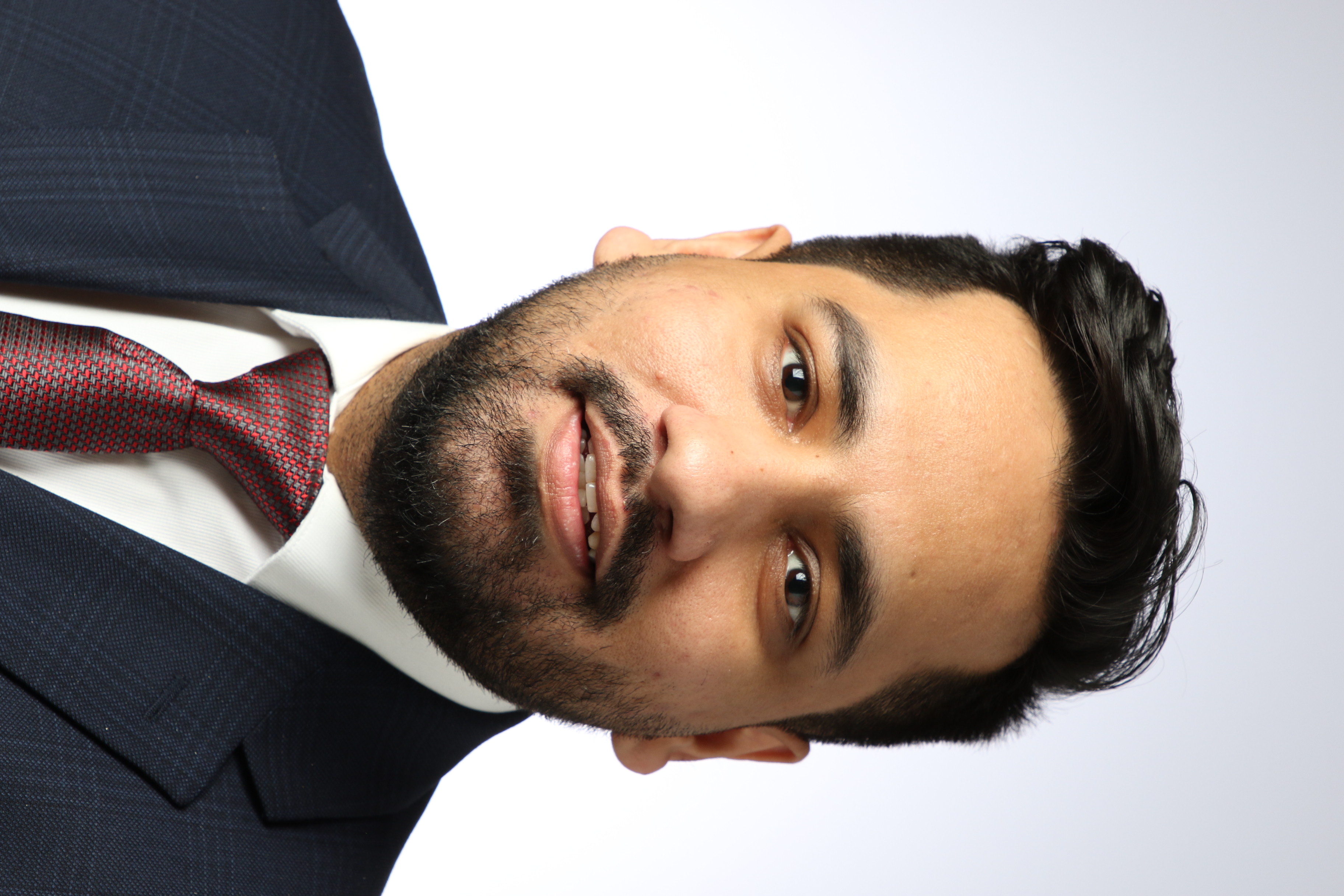
Clinical Cardiology and Cardiovascular Interventions, we deeply appreciate the interest shown in our work and its publication. It has been a true pleasure to collaborate with you. The peer review process, as well as the support provided by the editorial office, have been exceptional, and the quality of the journal is very high, which was a determining factor in our decision to publish with you.
The peer reviewers process is quick and effective, the supports from editorial office is excellent, the quality of journal is high. I would like to collabroate with Internatioanl journal of Clinical Case Reports and Reviews journal clinically in the future time.

Clinical Cardiology and Cardiovascular Interventions, I would like to express my sincerest gratitude for the trust placed in our team for the publication in your journal. It has been a true pleasure to collaborate with you on this project. I am pleased to inform you that both the peer review process and the attention from the editorial coordination have been excellent. Your team has worked with dedication and professionalism to ensure that your publication meets the highest standards of quality. We are confident that this collaboration will result in mutual success, and we are eager to see the fruits of this shared effort.

Dear Dr. Jessica Magne, Editorial Coordinator 0f Clinical Cardiology and Cardiovascular Interventions, I hope this message finds you well. I want to express my utmost gratitude for your excellent work and for the dedication and speed in the publication process of my article titled "Navigating Innovation: Qualitative Insights on Using Technology for Health Education in Acute Coronary Syndrome Patients." I am very satisfied with the peer review process, the support from the editorial office, and the quality of the journal. I hope we can maintain our scientific relationship in the long term.
Dear Monica Gissare, - Editorial Coordinator of Nutrition and Food Processing. ¨My testimony with you is truly professional, with a positive response regarding the follow-up of the article and its review, you took into account my qualities and the importance of the topic¨.

Dear Dr. Jessica Magne, Editorial Coordinator 0f Clinical Cardiology and Cardiovascular Interventions, The review process for the article “The Handling of Anti-aggregants and Anticoagulants in the Oncologic Heart Patient Submitted to Surgery” was extremely rigorous and detailed. From the initial submission to the final acceptance, the editorial team at the “Journal of Clinical Cardiology and Cardiovascular Interventions” demonstrated a high level of professionalism and dedication. The reviewers provided constructive and detailed feedback, which was essential for improving the quality of our work. Communication was always clear and efficient, ensuring that all our questions were promptly addressed. The quality of the “Journal of Clinical Cardiology and Cardiovascular Interventions” is undeniable. It is a peer-reviewed, open-access publication dedicated exclusively to disseminating high-quality research in the field of clinical cardiology and cardiovascular interventions. The journal's impact factor is currently under evaluation, and it is indexed in reputable databases, which further reinforces its credibility and relevance in the scientific field. I highly recommend this journal to researchers looking for a reputable platform to publish their studies.

Dear Editorial Coordinator of the Journal of Nutrition and Food Processing! "I would like to thank the Journal of Nutrition and Food Processing for including and publishing my article. The peer review process was very quick, movement and precise. The Editorial Board has done an extremely conscientious job with much help, valuable comments and advices. I find the journal very valuable from a professional point of view, thank you very much for allowing me to be part of it and I would like to participate in the future!”

Dealing with The Journal of Neurology and Neurological Surgery was very smooth and comprehensive. The office staff took time to address my needs and the response from editors and the office was prompt and fair. I certainly hope to publish with this journal again.Their professionalism is apparent and more than satisfactory. Susan Weiner

My Testimonial Covering as fellowing: Lin-Show Chin. The peer reviewers process is quick and effective, the supports from editorial office is excellent, the quality of journal is high. I would like to collabroate with Internatioanl journal of Clinical Case Reports and Reviews.

My experience publishing in Psychology and Mental Health Care was exceptional. The peer review process was rigorous and constructive, with reviewers providing valuable insights that helped enhance the quality of our work. The editorial team was highly supportive and responsive, making the submission process smooth and efficient. The journal's commitment to high standards and academic rigor makes it a respected platform for quality research. I am grateful for the opportunity to publish in such a reputable journal.
My experience publishing in International Journal of Clinical Case Reports and Reviews was exceptional. I Come forth to Provide a Testimonial Covering the Peer Review Process and the editorial office for the Professional and Impartial Evaluation of the Manuscript.

I would like to offer my testimony in the support. I have received through the peer review process and support the editorial office where they are to support young authors like me, encourage them to publish their work in your esteemed journals, and globalize and share knowledge globally. I really appreciate your journal, peer review, and editorial office.
Dear Agrippa Hilda- Editorial Coordinator of Journal of Neuroscience and Neurological Surgery, "The peer review process was very quick and of high quality, which can also be seen in the articles in the journal. The collaboration with the editorial office was very good."

I would like to express my sincere gratitude for the support and efficiency provided by the editorial office throughout the publication process of my article, “Delayed Vulvar Metastases from Rectal Carcinoma: A Case Report.” I greatly appreciate the assistance and guidance I received from your team, which made the entire process smooth and efficient. The peer review process was thorough and constructive, contributing to the overall quality of the final article. I am very grateful for the high level of professionalism and commitment shown by the editorial staff, and I look forward to maintaining a long-term collaboration with the International Journal of Clinical Case Reports and Reviews.
To Dear Erin Aust, I would like to express my heartfelt appreciation for the opportunity to have my work published in this esteemed journal. The entire publication process was smooth and well-organized, and I am extremely satisfied with the final result. The Editorial Team demonstrated the utmost professionalism, providing prompt and insightful feedback throughout the review process. Their clear communication and constructive suggestions were invaluable in enhancing my manuscript, and their meticulous attention to detail and dedication to quality are truly commendable. Additionally, the support from the Editorial Office was exceptional. From the initial submission to the final publication, I was guided through every step of the process with great care and professionalism. The team's responsiveness and assistance made the entire experience both easy and stress-free. I am also deeply impressed by the quality and reputation of the journal. It is an honor to have my research featured in such a respected publication, and I am confident that it will make a meaningful contribution to the field.

"I am grateful for the opportunity of contributing to [International Journal of Clinical Case Reports and Reviews] and for the rigorous review process that enhances the quality of research published in your esteemed journal. I sincerely appreciate the time and effort of your team who have dedicatedly helped me in improvising changes and modifying my manuscript. The insightful comments and constructive feedback provided have been invaluable in refining and strengthening my work".

I thank the ‘Journal of Clinical Research and Reports’ for accepting this article for publication. This is a rigorously peer reviewed journal which is on all major global scientific data bases. I note the review process was prompt, thorough and professionally critical. It gave us an insight into a number of important scientific/statistical issues. The review prompted us to review the relevant literature again and look at the limitations of the study. The peer reviewers were open, clear in the instructions and the editorial team was very prompt in their communication. This journal certainly publishes quality research articles. I would recommend the journal for any future publications.
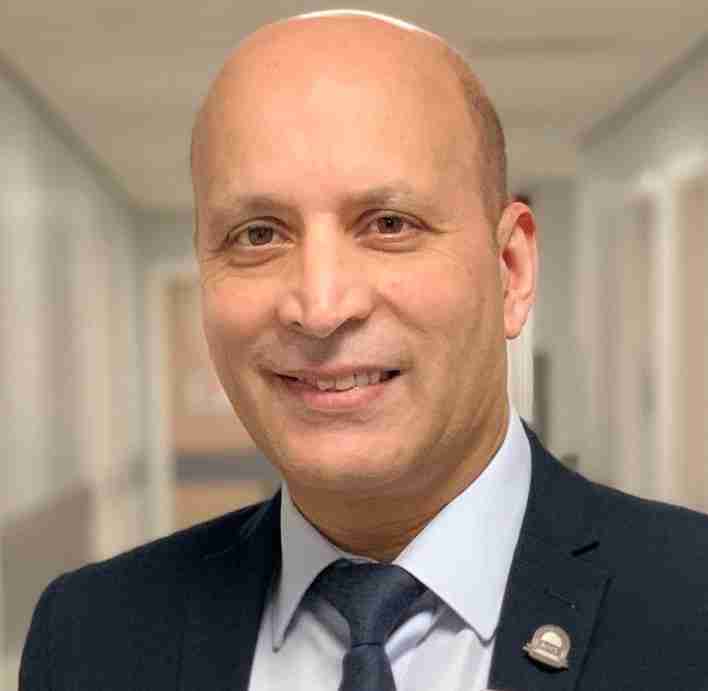
Dear Jessica Magne, with gratitude for the joint work. Fast process of receiving and processing the submitted scientific materials in “Clinical Cardiology and Cardiovascular Interventions”. High level of competence of the editors with clear and correct recommendations and ideas for enriching the article.

We found the peer review process quick and positive in its input. The support from the editorial officer has been very agile, always with the intention of improving the article and taking into account our subsequent corrections.

My article, titled 'No Way Out of the Smartphone Epidemic Without Considering the Insights of Brain Research,' has been republished in the International Journal of Clinical Case Reports and Reviews. The review process was seamless and professional, with the editors being both friendly and supportive. I am deeply grateful for their efforts.
To Dear Erin Aust – Editorial Coordinator of Journal of General Medicine and Clinical Practice! I declare that I am absolutely satisfied with your work carried out with great competence in following the manuscript during the various stages from its receipt, during the revision process to the final acceptance for publication. Thank Prof. Elvira Farina

Dear Jessica, and the super professional team of the ‘Clinical Cardiology and Cardiovascular Interventions’ I am sincerely grateful to the coordinated work of the journal team for the no problem with the submission of my manuscript: “Cardiometabolic Disorders in A Pregnant Woman with Severe Preeclampsia on the Background of Morbid Obesity (Case Report).” The review process by 5 experts was fast, and the comments were professional, which made it more specific and academic, and the process of publication and presentation of the article was excellent. I recommend that my colleagues publish articles in this journal, and I am interested in further scientific cooperation. Sincerely and best wishes, Dr. Oleg Golyanovskiy.
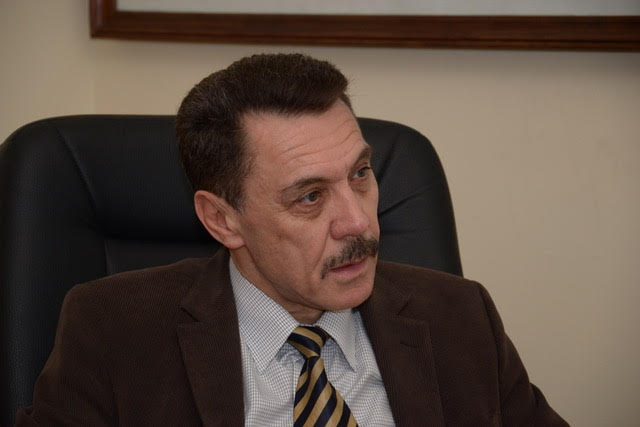
Dear Ashley Rosa, Editorial Coordinator of the journal - Psychology and Mental Health Care. " The process of obtaining publication of my article in the Psychology and Mental Health Journal was positive in all areas. The peer review process resulted in a number of valuable comments, the editorial process was collaborative and timely, and the quality of this journal has been quickly noticed, resulting in alternative journals contacting me to publish with them." Warm regards, Susan Anne Smith, PhD. Australian Breastfeeding Association.

Dear Jessica Magne, Editorial Coordinator, Clinical Cardiology and Cardiovascular Interventions, Auctores Publishing LLC. I appreciate the journal (JCCI) editorial office support, the entire team leads were always ready to help, not only on technical front but also on thorough process. Also, I should thank dear reviewers’ attention to detail and creative approach to teach me and bring new insights by their comments. Surely, more discussions and introduction of other hemodynamic devices would provide better prevention and management of shock states. Your efforts and dedication in presenting educational materials in this journal are commendable. Best wishes from, Farahnaz Fallahian.
Dear Maria Emerson, Editorial Coordinator, International Journal of Clinical Case Reports and Reviews, Auctores Publishing LLC. I am delighted to have published our manuscript, "Acute Colonic Pseudo-Obstruction (ACPO): A rare but serious complication following caesarean section." I want to thank the editorial team, especially Maria Emerson, for their prompt review of the manuscript, quick responses to queries, and overall support. Yours sincerely Dr. Victor Olagundoye.

Dear Ashley Rosa, Editorial Coordinator, International Journal of Clinical Case Reports and Reviews. Many thanks for publishing this manuscript after I lost confidence the editors were most helpful, more than other journals Best wishes from, Susan Anne Smith, PhD. Australian Breastfeeding Association.

Dear Agrippa Hilda, Editorial Coordinator, Journal of Neuroscience and Neurological Surgery. The entire process including article submission, review, revision, and publication was extremely easy. The journal editor was prompt and helpful, and the reviewers contributed to the quality of the paper. Thank you so much! Eric Nussbaum, MD
Dr Hala Al Shaikh This is to acknowledge that the peer review process for the article ’ A Novel Gnrh1 Gene Mutation in Four Omani Male Siblings, Presentation and Management ’ sent to the International Journal of Clinical Case Reports and Reviews was quick and smooth. The editorial office was prompt with easy communication.

Dear Erin Aust, Editorial Coordinator, Journal of General Medicine and Clinical Practice. We are pleased to share our experience with the “Journal of General Medicine and Clinical Practice”, following the successful publication of our article. The peer review process was thorough and constructive, helping to improve the clarity and quality of the manuscript. We are especially thankful to Ms. Erin Aust, the Editorial Coordinator, for her prompt communication and continuous support throughout the process. Her professionalism ensured a smooth and efficient publication experience. The journal upholds high editorial standards, and we highly recommend it to fellow researchers seeking a credible platform for their work. Best wishes By, Dr. Rakhi Mishra.

Dear Jessica Magne, Editorial Coordinator, Clinical Cardiology and Cardiovascular Interventions, Auctores Publishing LLC. The peer review process of the journal of Clinical Cardiology and Cardiovascular Interventions was excellent and fast, as was the support of the editorial office and the quality of the journal. Kind regards Walter F. Riesen Prof. Dr. Dr. h.c. Walter F. Riesen.

Dear Ashley Rosa, Editorial Coordinator, International Journal of Clinical Case Reports and Reviews, Auctores Publishing LLC. Thank you for publishing our article, Exploring Clozapine's Efficacy in Managing Aggression: A Multiple Single-Case Study in Forensic Psychiatry in the international journal of clinical case reports and reviews. We found the peer review process very professional and efficient. The comments were constructive, and the whole process was efficient. On behalf of the co-authors, I would like to thank you for publishing this article. With regards, Dr. Jelle R. Lettinga.

Dear Clarissa Eric, Editorial Coordinator, Journal of Clinical Case Reports and Studies, I would like to express my deep admiration for the exceptional professionalism demonstrated by your journal. I am thoroughly impressed by the speed of the editorial process, the substantive and insightful reviews, and the meticulous preparation of the manuscript for publication. Additionally, I greatly appreciate the courteous and immediate responses from your editorial office to all my inquiries. Best Regards, Dariusz Ziora

Dear Chrystine Mejia, Editorial Coordinator, Journal of Neurodegeneration and Neurorehabilitation, Auctores Publishing LLC, We would like to thank the editorial team for the smooth and high-quality communication leading up to the publication of our article in the Journal of Neurodegeneration and Neurorehabilitation. The reviewers have extensive knowledge in the field, and their relevant questions helped to add value to our publication. Kind regards, Dr. Ravi Shrivastava.

Dear Clarissa Eric, Editorial Coordinator, Journal of Clinical Case Reports and Studies, Auctores Publishing LLC, USA Office: +1-(302)-520-2644. I would like to express my sincere appreciation for the efficient and professional handling of my case report by the ‘Journal of Clinical Case Reports and Studies’. The peer review process was not only fast but also highly constructive—the reviewers’ comments were clear, relevant, and greatly helped me improve the quality and clarity of my manuscript. I also received excellent support from the editorial office throughout the process. Communication was smooth and timely, and I felt well guided at every stage, from submission to publication. The overall quality and rigor of the journal are truly commendable. I am pleased to have published my work with Journal of Clinical Case Reports and Studies, and I look forward to future opportunities for collaboration. Sincerely, Aline Tollet, UCLouvain.

Dear Ms. Mayra Duenas, Editorial Coordinator, International Journal of Clinical Case Reports and Reviews. “The International Journal of Clinical Case Reports and Reviews represented the “ideal house” to share with the research community a first experience with the use of the Simeox device for speech rehabilitation. High scientific reputation and attractive website communication were first determinants for the selection of this Journal, and the following submission process exceeded expectations: fast but highly professional peer review, great support by the editorial office, elegant graphic layout. Exactly what a dynamic research team - also composed by allied professionals - needs!" From, Chiara Beccaluva, PT - Italy.

Dear Maria Emerson, Editorial Coordinator, we have deeply appreciated the professionalism demonstrated by the International Journal of Clinical Case Reports and Reviews. The reviewers have extensive knowledge of our field and have been very efficient and fast in supporting the process. I am really looking forward to further collaboration. Thanks. Best regards, Dr. Claudio Ligresti